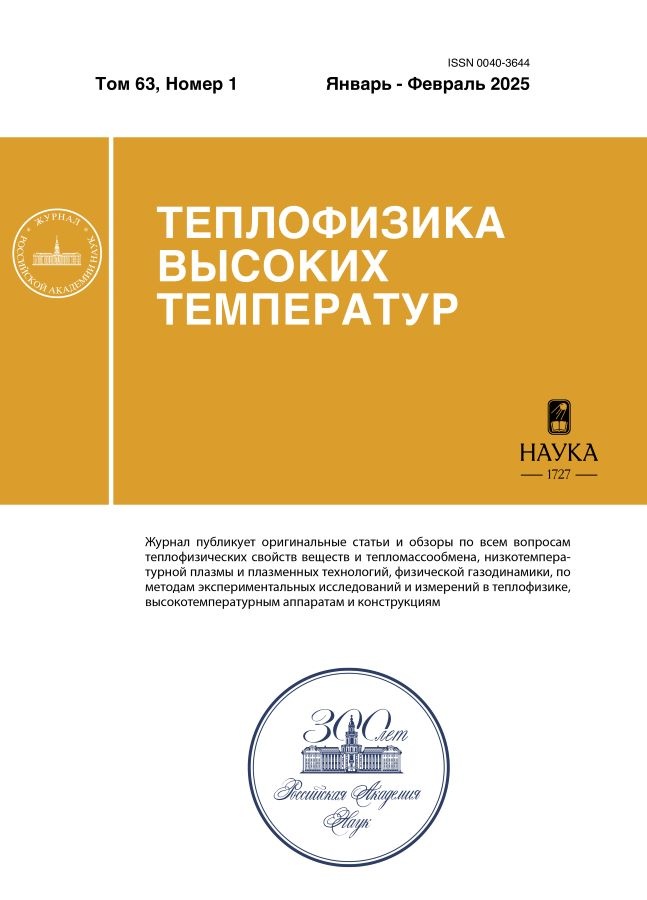Улучшение разрешения RANS/ILES(i)-методом турбулентных вихревых структур при дозвуковых числах Маха
- Авторлар: Жигалкин А.С.1, Любимов Д.А.1
-
Мекемелер:
- ФАУ «Центральный институт авиационного моторостроения им. П.И. Баранова»
- Шығарылым: Том 63, № 1 (2025)
- Беттер: 57-67
- Бөлім: Heat and Mass Transfer and Physical Gasdynamics
- URL: https://ter-arkhiv.ru/0040-3644/article/view/689138
- DOI: https://doi.org/10.31857/S0040364425010093
- ID: 689138
Дәйексөз келтіру
Аннотация
Представлена модификация RANS/ILES(i)-метода высокого разрешения, позволяющая регулировать вклад диффузионного члена схемы Роу для аппроксимации конвективных членов уравнений Навье–Стокса с помощью умножения его на некоторую функцию, зависящую от локальных параметров течения. Предложено два варианта функции. В первом случае она зависит только от локального числа Маха в степени большей единицы, во втором – еще и от завихренности в рассматриваемой точке течения. Для оценки эффективности предложенных функций выполнены расчеты распада однородной изотропной турбулентности при разных уровнях турбулентного числа Маха и околозвуковой затопленной турбулентной струи, выходящей из модельного конического сопла. Исследовано влияние коэффициентов, входящих в предложенные функции, на эффективность уменьшения схемной вязкости при различных числах Маха рассматриваемого течения. Выполнено сравнение с данными экспериментов и результатами исходного варианта RANS/ILES(i)-метода.
Толық мәтін
Авторлар туралы
А. Жигалкин
ФАУ «Центральный институт авиационного моторостроения им. П.И. Баранова»
Хат алмасуға жауапты Автор.
Email: aszhigalkin@ciam.ru
Ресей, Москва
Д. Любимов
ФАУ «Центральный институт авиационного моторостроения им. П.И. Баранова»
Email: dalyubimov@ciam.ru
Ресей, Москва
Әдебиет тізімі
- Islam A., Thornber B. A High-order Hybrid Turbulence Model with Implicit Large-eddy Simulation // Comput. Fluids. 2018. V. 167. P. 292.
- Любимов Д.А. Разработка и применение эффективного RANS/ILES-метода для расчета сложных турбулентных струй // ТВТ. 2008. Т. 46. № 2. С. 271.
- Kuan T.W.I., Szmelter J., Cocetta F. LES and ILES Simulations of Free-jets // Flow, Turbul. Combust. 2023. V. 110. P. 547.
- Markesteijn A.P., Gryazev V., Karabasov S.A., Ayupov R.Sh., Benderskiy L.A., Lyubimov D.A. Flow and Noise Predictions of Coaxial Jets // AIAA J. 2021. V. 58. № 12. P. 5280.
- Lyubimov D.A., Potekhina I.V. Investigation of Capabilities Synthetic Jets Application for Active Flow Control in Diffuser Ducts with Flow Separation Using High Resolution RANS/ILES Method // EUCASS. 2013. Paper 80.
- Любимов Д.А., Потехина И.В. Применение RANS/ILES-метода для анализа эффективности управления отрывными течениями в диффузорах с помощью синтетических струй // МЖГ. 2015. № 4. С. 144.
- Lyubimov D., Fedorenko A. External Flow Velocity and Synthetic Jets Parameters Influence on Cavity Flow Structure and Acoustics Characteristics Using RANS/ILES // Int. J. Aeroacoustics. 2018. V. 17. № 3. P. 259.
- Любимов Д.А., Потехина И.В. Исследование нестационарных режимов работы сверхзвукового воздухозаборника RANS/ILES-методом // ТВТ. 2016. Т. 54. № 5. С. 784.
- Любимов Д.А., Честных А.О. Исследование RANS/ILES-методом течения в высокоскоростном воздухозаборнике смешанного сжатия на различных режимах работы // ТВТ. 2018. Т. 56. № 5. С. 729.
- Perrin R., Lamballais E. Assessment of Implicit LES Modelling for Bypass Transition of a Boundary Layer // Comput. Fluids. 2023. V. 251. 105728.
- Жигалкин А.С., Любимов Д.А. Анализ RANS/ILES-методом влияния турбулентности набегающего потока на течение в сверхзвуковом воздухозаборнике. Оценка диссипативных свойств разностной схемы на примере моделирования распада однородной изотропной турбулентности в рамках ILES // ТВТ. 2022. Т. 60. № 1. С. 63.
- Li Z., Zhang Y., Chen H. A Low Dissipation Numerical Scheme for Implicit Large Eddy Simulation // Comput. Fluids. 2015. V. 117. P. 233.
- Любимов Д.А. Разработка и применение метода высокого разрешения для расчета струйных течений методом моделирования крупных вихрей // ТВТ. 2012. Т. 50. № 3. С. 450.
- Bui T.T. A Parallel, Finite-volume Algorithm for Large-eddy Simulation of Turbulent Flows // NASA TM-206570. 1999.
- Дерюгин Ю.Н., Емельянова Я.В., Жучков Р.Н., Уткина А.А. Применение схемы с гибридной диссипацией в решении задач вычислительной аэроакустики // ЖВМиМФ. 2018. Т. 58. № 9. С. 1478.
- Sun D., Bai J., Yan C. An Effective Low Dissipation Method for Compressible Flows // Aerospace Sci. Technol. 2020. V. 100. 105757.
- Roe P.L. Approximate Riemann Solvers, Parameters Vectors, and Difference Schemes // J. Comp. Phys. 1981. V. 43. P. 357.
- Suresh A., Huynh H.T. Accurate Monotonicity–Preserving Schemes with Runge-Kutta Time Stepping // J. Comp. Phys. 1997. V. 136. № 1. P. 83.
- Spalart P.R., Allmaras S.R. A One-equation Turbulence Model for Aerodynamic Flows // La Recherche Aerospatiale. 1994. № 1. P. 5.
- Compte-Bellot G., Corrsin S. Simple Eulerian Time Correlation of Full- and Narrowband Velocity Signals in Grid-generated “Isotropic” Turbulence // J. Fluid Mech. 1971. V. 48. P. 273.
- Bridges J., Wernet M. Measurements of the Aeroacoustic Sound Source in Hot Jets // AIAA-2003-3130. 2003.
- Bogey C., Marsden O., Bailly C. Influence of Initial Turbulence Level on the Flow and Sound Fields of a Subsonic Jet at a Diameter-based Reynolds Number of 105 // J. Fluid Mech. 2012. V. 701. P. 352.
Қосымша файлдар























